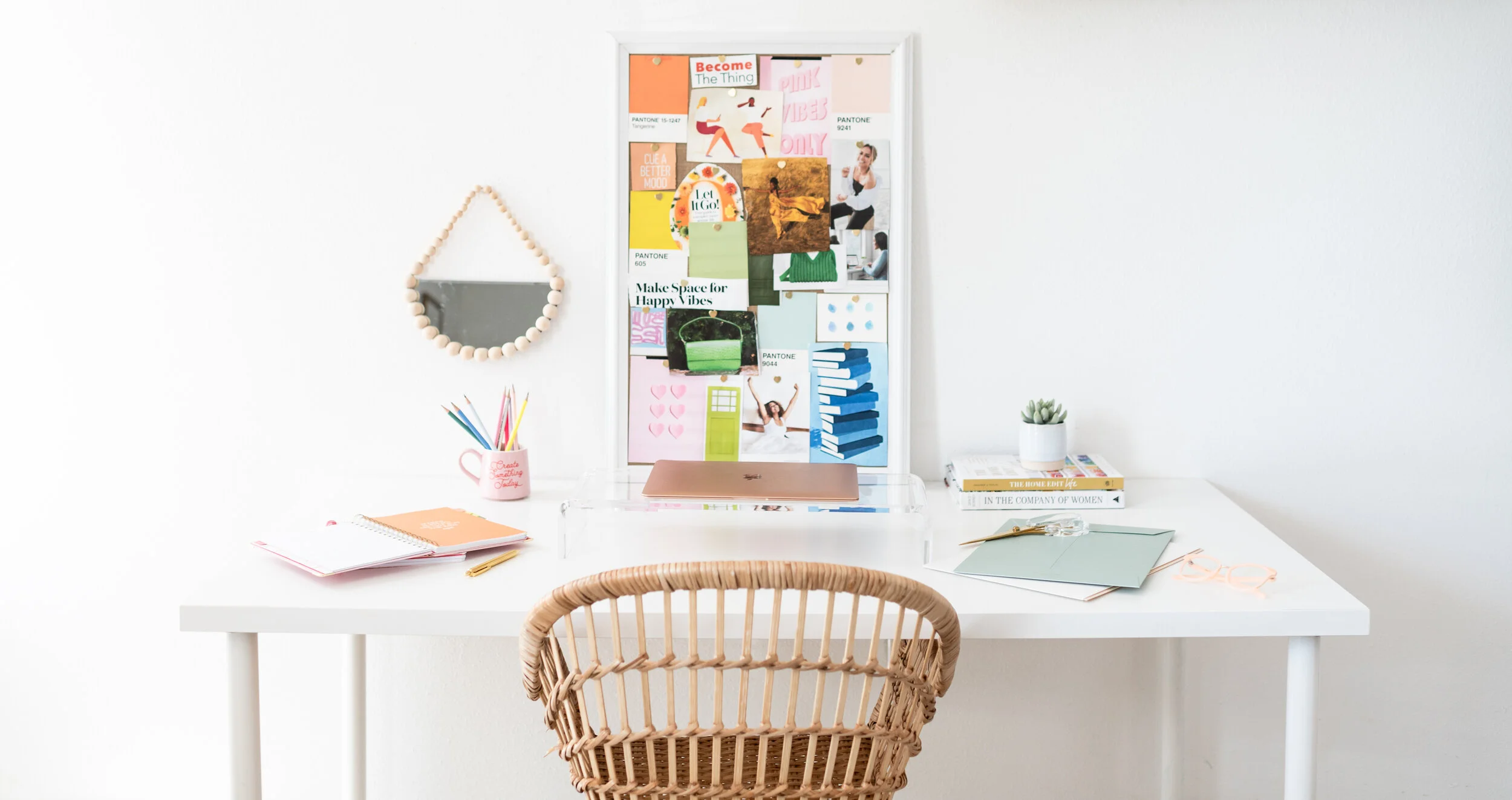Working from home. It sounds great in theory, but it actually takes a lot of discipline to establish a routine that makes working from home productive and fulfilling. Given that many companies are currently implementing work from home policies to help flatten the curve and prevent the spread of COVID-19, I feel compelled to share my tried-and-true tips for creating a productive work-from-home environment.
As someone who’s been freelancing and working from home for the past five years, I’ve gone through all of the ups and downs WFH life can present—from feeling lonely and needing to talk to someone to needing to get out of the house and take a break (while practicing social distancing, of course). Scroll on for my tips on how to create a dedicated work space, set office hours, eliminate distracts, and more.
Create a Dedicated Work Space
Find a place in your home that you can dedicate to work. This will be different for everyone, and while I highly encourage having a desk, a dining room table or breakfast bar are great substitutes.
I don’t recommend your workspace be on your couch or on anything where you can recline. While I love being on my laptop and having my feet up on my couch, I am never as productive as I am when sitting upright.
When choosing a space for work in your home, try to find an area that has the following:
Find a space that you can check-in for work and check-out for everything you’d typically do while at home.
Set Office Hours
As a freelancer, it’s incredibly important to have office hours. Not only to manage client expectations but to give yourself structure.
Setting office hours should empower you to develop a routine for yourself like you typically would if you had a 9-to-5 office job. You’d wake up in the morning, enjoy your morning cup of coffee, maybe squeeze in a yoga class before you get dressed, and head to work. The same should be taken into consideration when you work from home.
Freelance life is supposed to allow you to do all of the things you want to do with your time. Don’t let it create an opposite effect where you convince yourself to always be on and working just because you’re able to do it from the freedom of your own home.
Eliminate Distractions
It’s so important to eliminate any distractions from your home that would take you away from getting work done. For me, I need my home to be clean - period. If the home isn’t tidy, I’m not focused.
Other distractions I try to eliminate are:
If you find yourself being distracted by a common theme throughout your days, find a way to eliminate that distraction so you can stay focused and do your best work.
Get Out of Your PJs
We all have days where we want to stay in our PJs, but it’s important to get out of the jammies and into something that says, “my day has started.”
Most of the time I will change out of PJs and into activewear or comfortable denim. I’ll wash my face, brush my teeth and hair, put on some CC cream and deodorant, and then get to work. It’s a small effort that makes a big difference.
Talk To Someone
One of the biggest things I didn’t realize about working from home is just how lonely it can be.
You are by yourself all day and unless you have clients who love phone calls, most of your correspondence will primarily be done through email. It’s important to talk to someone; anyone. Make time to pick up the phone and call a relative or an old friend. Schedule calls with people in your network so you don’t lose your conversation skills.
I realized a change in myself probably around my second or third year of freelancing, where I would struggle with conversation because I just wasn’t having any. I’d either talk too long or too fast, have difficulty forming sentences, and just felt awkward. This is not me.
Now I talk to everyone.
I am not shy when it comes to conversation and make an effort to have a casual chat with just about anybody I come into contact with throughout the day. That’s people I pass by when I’m walking the dogs, the barista at Alfred’s, Anthony who does my nails at Olive & June, Mary who delivers our mail… AN-Y-BOD-Y.
Get Out of the House
How many of you working from home and reading this typically don’t leave your house during the workweek? 🙋 I get it.
Your home is your office and your office is your home, but it’s still important to get out of the house every once in a while. Keep yourself active and engaged with things happening in your community so you can get out of your PJs, talk to somebody, and enjoy those office hours! (You like what I did there?)
It’s important to get outside and break away from work so you can actually stay engaged in work.
When I spend hours on my computer without any breaks my mind becomes fatigued, and I become less productive. So I’ll take the dogs for a longer walk, do a workout class on my balcony, or take my laptop to the coffee shop down the road and just take in a bit of new scenery to help adjust my internal boss mode.
So if you’re feeling uninspired or having trouble getting anything done, give yourself a break and get out.
About the author: Audrey Adair is a seasoned freelance communications professional and founder of The Scope, a platform providing resources and community to freelancers and the self-employed. Connect with The Scope on Instagram and join their email list to receive your free resource, The Freelancer Starter Kit.
This story was originally published on March 5, 2019, and has since been updated.



























